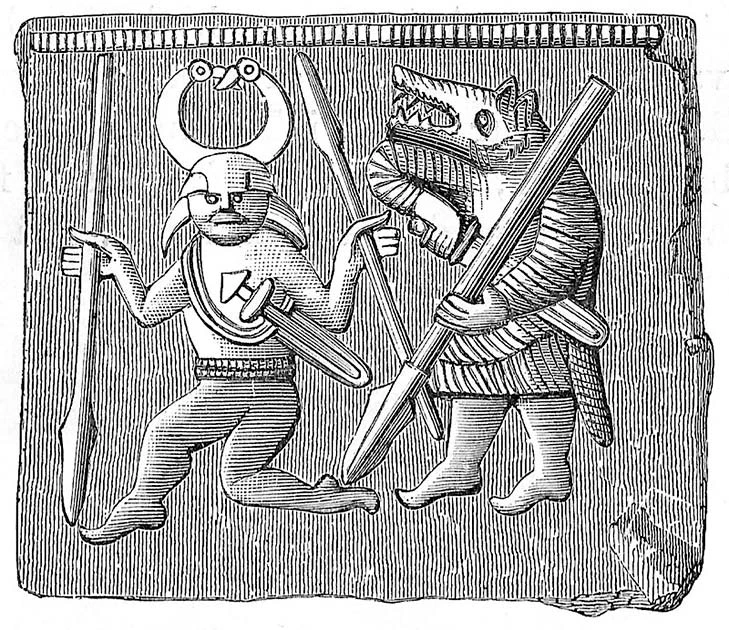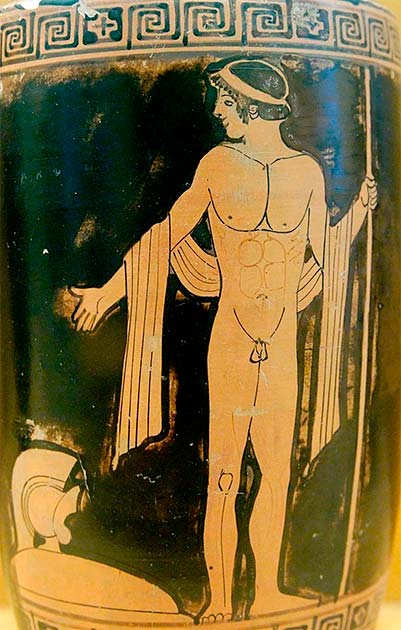The Koryos were literally a group of fighters, from out of the earliest proto-history of Europe. The word means “war party” or “people under arms”, and this Indo-European band of warriors were not bonded by blood. Young, unmarried, males would leave their homes and serve as fighters in for many years.
It has been speculated that this was a rite of passage to progress from adolescence into manhood. Researchers have supposed that the existence of the Koryos shows the link between young men without land, sent away to hunt for their home community before returning to defend that community, links the idea of youthful life with later death.
They have been mystically identified as wolves or dogs which are traditional symbols of death. Could these fighters be the first warbands in history, and could the need for such a band come out of this division between life and death?
The Division in Life
The word Koryos is derived from the Proto-Indo-European language. It stems from the noun of Koro which means cutting, division, or a section.
It is similar to the old Persian of Kara and the Lithuanian Karas both of which are words for war or army. In the Baltic, Karyas means army whilst in the Celtic language Koryos is a troop tribe.
The idea of the Koyros brotherhood has been developed since the 20th century predominately in German by historians and scholars such as Schurtz, Bluher, and Dumezil. It was these theories that influenced the ethno-nationalist movement Volkisch in the early 20th century which was propagated by the Nazis in the lead-up to the second world war.

Scholars have discovered in the latter part of the 20th century that these far-right ideologies found their beginnings in these theories. But that they also discovered evidence for the Koyros brotherhood in early Germanic and Indo-European communities.
- The Bear Cult Hypothesis: Ancient Ursine Worship
- An Ancient Hero: Who was the Griffin Warrior of Pylos?
This was effectively a Rite of Passage, and would have included adolescent males aged from 12 or 13 up to around the age of 18 to 19 years old from the more prominent members of society. This would have allowed them to be initiated into manhood together thus forming a bond in both age and class.
They had to go through a variety of painful tasks and trials in order to enter the group. Often, they were sent away to live as landless warriors in the wild for several years within a group of around 2 to 12 people.
The young men were sent without any possessions other than their weapons whilst they lived on the edge of society. Whilst they lived there, they were banned from harming the host society but to anyone else they were allowed to steal, raid, and sexually assault.
Primarily, the life of the Koyros was focused on martial duties. It involved hunting, pillaging, and the retelling of heroic deeds. It is thought that a tradition of epic poetry telling of violent warriors acting on behalf of gods would have thrived here.
The leader of the band in the wild would be referred to as the Koryonos. He was decided by a game of dice. The winner would be accepted as the leader and the others would pledge to kill for him and to die for him. The leader was regarded as their master through the rite of passage and as their employer for whom they were bodyguards.
This stage of their life was seen as a transitional stage between being an adolescent warrior and becoming a married man. The Koyros were linked symbolically with death and transition as well as fertility and sexual freedom.
It has been argued that they served as unmarried youths without possessions so that at the end of the rite, they had transformed into married men with land within the community. This way of living would have promoted cohesion within the group and improved their effectiveness in combat.
When a bond is formed between warriors, they are more likely to try and protect each other and win as one. This was hugely important for territorial expansion, and warrior rituals and a sense of “belonging” remains a key part of military psychology to this day.
Shepherds for the Migration
The Koyros would have played a significant role in the Indo-European migrations and the development of Indo-European languages across Eurasia. These young warriors would set out on raids which may have helped them settle new lands and allowed their tribe to migrate and expand.
- The Professional Soldiers of Tollense Valley, Europe’s Oldest Battle
- The Arslantepe Mound of Turkey: The First Swords
The Koyros acted as an almost scouting party for the main tribe. In Danish Jutland, burials have been discovered filled with 90 percent males which are likely due to an attempt to expand territory and influence by using young groups of warriors.
The warriors drove people who were not protected by larger Indo-European groups to move either away or into larger groups so that they could remain safe from raiding or thievery. This may explain why outsiders began to be recruited to high social positions in this period.

Removed from their settlements and living apart, the warriors of the Koyros became larger than life in the eyes of their people. They have been described as shape-shifting warriors. They wore the skins of wolves and dogs to present themselves as harbingers of death.
They would also adopt wolf-like behavior and would have names containing wolves or dogs in them. Some of their prized attributes were violence, trickery, strength, fury, and swiftness.
Not only would the Koyros live separately from their community, but it seems likely that they identified as a different class or society of beings. They would not follow human taboos and this separate identity that they embodied would allow them to feel no regret when they returned to be integrated into the tribe, as they were not fully human when they were committing the acts.
These groups have been found across a vast array of societies in Indo-Europe, following the Koryos tradition. For example, at Krasnosamarskoe, near the Volga Steppes, the site was filled with the sacrifice of 51 dogs and 7 wolves. In India, it was recorded that at the age of 8, young men would begin studying poetry about warriors and when they reached 16, they were inducted into a warrior band.
In Greece, young men were expected to live on the edges of society, denied citizenship, for two years while they guarded their communities against attack. Meanwhile, in Celtic tradition, the Fianna were the young warrior guards who lived outdoors in the woods of Ireland. No matter which society you look at, there seems to have always been one version of the Koyros.
Top Image: The young men of the Koryos would live apart from their tribes, fighting for them but freed from their taboos, before returning to settle down. Source: Warmtail / Adobe Stock.
By Kurt Readman